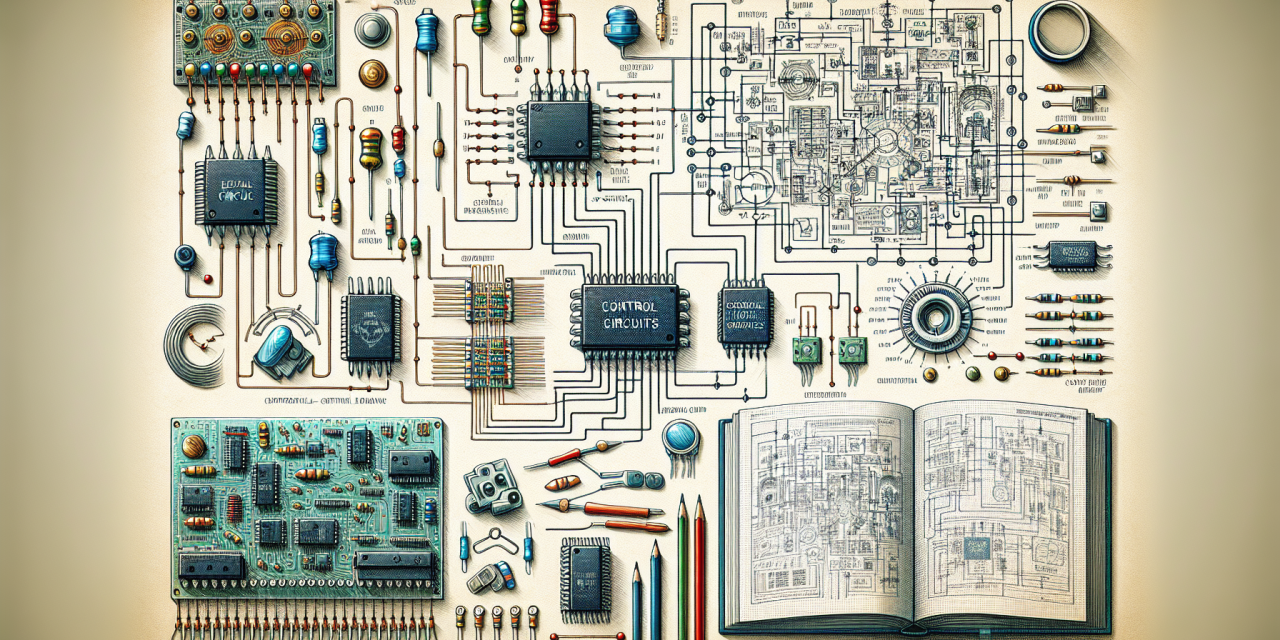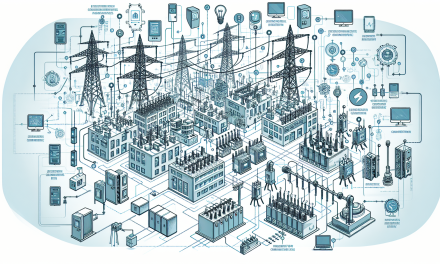Table of Contents
- Introduction
- Understanding the Importance of Electrical Drawings and Control Circuits
- Key Components of Electrical Drawings
- Diving into Control Circuits
- Effective Communication through Electrical Drawings
- Essential Skills for Working with Electrical Drawings and Control Circuits
- Real-World Applications
- Frequently Asked Questions
- Conclusion
Introduction
Electrical drawings and control circuits play a vital role in the electrical engineering landscape. Understanding these components not only helps improve technical skills but also enhances one’s ability to communicate ideas effectively. Furthermore, grasping the intricacies of these concepts will empower individuals to tackle complex electrical systems with confidence.
Understanding the Importance of Electrical Drawings and Control Circuits
First and foremost, electrical drawings serve as blueprints that depict how electrical systems and components are arranged. They assist everyone involved in the engineering process, from electrical engineers to technicians, ensuring clarity and precision. Likewise, control circuits regulate the flow of electricity through various devices, acting as the nervous system of electrical systems.
Moreover, the significance of these subjects is evident in many fields, including industrial automation, residential wiring, and power generation. Therefore, an in-depth understanding of electrical drawings and control circuits can significantly impact safety, efficiency, and reliability.
Key Components of Electrical Drawings
Types of Electrical Drawings
To begin with, various types of electrical drawings exist, each serving a specific purpose. From schematic diagrams to wiring diagrams, understanding each type’s function is crucial.
- Schematic Diagrams: These diagrams provide a simplified representation of electrical components and their connections. They help visualize the flow of electricity and are essential for troubleshooting.
- Wiring Diagrams: Unlike schematic diagrams, wiring diagrams illustrate the physical layout of electrical components. They show how wires connect and where each component is located.
- Block Diagrams: These diagrams present a high-level overview of a system’s components. They are invaluable for understanding system interactions without getting lost in the details.
Essential Symbols in Electrical Drawings
Next, recognizing the symbols used in electrical drawings is important. Each symbol represents a specific electrical component, making it easier to understand complex drawings. Common symbols include:
- Resistors: Depicted as a zig-zag line, resistors limit the flow of electrical current.
- Capacitors: Shown as parallel lines, capacitors store electrical energy.
- Switches: Represented as a break in the line, switches control the flow of electricity.
Additionally, knowledge of these symbols enhances one’s ability to read and interpret electrical drawings accurately.
Diving into Control Circuits
What are Control Circuits?
Control circuits serve as essential components in many electrical systems. These circuits dictate how electrical devices behave and interact with each other. Essentially, they involve relays, timers, and sensors, which work together to create automated responses based on specific inputs.
The Role of Logic in Control Circuits
Logic plays a critical role in designing effective control circuits. Logic gates help manage the flow of electricity based on predetermined conditions. This functionality is crucial in creating various applications, such as safety systems, alarm systems, and automated processes.
Effective Communication through Electrical Drawings
By providing a common language for engineers and technicians, electrical drawings facilitate clear communications. For instance, when developing a new electrical system, precise drawings ensure that all team members, regardless of their expertise, can understand the design. This clarity reduces the likelihood of errors during both design and implementation phases.
Furthermore, the integration of electrical drawings into documentation helps maintain system reliability. In case of troubleshooting or maintenance, stakeholders can refer to these drawings for guidance.
Essential Skills for Working with Electrical Drawings and Control Circuits
Acquiring competencies related to electrical drawings and control circuits is vital for anyone in the field of electrical engineering. Here are some essential skills to focus on:
- Reading and Interpreting Drawings: Mastering the ability to read various types of electrical drawings amplifies one’s effectiveness. The ability to decode schematic or wiring diagrams is essential for professional success.
- Problem-Solving: Developing strong analytical skills is significant when troubleshooting electrical issues. The capacity to identify problems quickly and develop effective solutions can greatly enhance operational efficiency.
- Attention to Detail: Electrical drawings require precision. A minor error can lead to significant issues later in the process. Hence, cultivating meticulousness is paramount.
Real-World Applications
Electrical drawings and control circuits are not limited to theoretical knowledge; they play a crucial role in real-world applications. Industries such as manufacturing, energy, and utilities depend on these components for seamless operations. For instance, in manufacturing plants, control circuits are essential for automating machines, allowing for precise and efficient operations.
Moreover, individuals seeking to expand their knowledge in this area can take advantage of resources available online, such as the Electrical Control Circuits & Drawings Training Course. This resource provides valuable insights and practical knowledge that can enhance one’s skill set.
Frequently Asked Questions
What are the fundamental benefits of learning electrical drawings?
Learning electrical drawings aids in understanding how systems operate and improves communication among team members. This expertise also enhances troubleshooting skills, making it easier to diagnose and resolve electrical issues.
How do control circuits improve efficiency?
Control circuits automate responses to specific inputs, significantly increasing efficiency. They enable quicker reactions to changes in state or demand, helping streamline processes while minimizing human error.
What types of careers utilize knowledge of electrical drawings and control circuits?
A variety of professions benefit from understanding electrical drawings and control circuits. Electrical engineers, automation technicians, and field technicians regularly interact with these concepts as part of their daily responsibilities.
Conclusion
In conclusion, electrical drawings and control circuits are indispensable elements in electrical engineering and related fields. By mastering these concepts, professionals can improve their technical abilities, enhance communication, and contribute positively to their industries. Moreover, as technology continues to evolve, staying updated with electrical system designs and control strategies becomes increasingly important. Therefore, embracing learning opportunities will only serve to benefit those passionate about advancing their careers in this dynamic field. To delve deeper into essential topics, consider exploring resources like Unlocking the Essentials of Electrical Power Systems for Non-Engineers, Unlocking Effective Power Plant Operations and Control Techniques, Comprehensive Guide to Understanding Electrical Faults: Causes, Detection, and Remedies, Essential Skills for the Safe Operation and Maintenance of Circuit Breakers and Switchgear, and Evolving Power Generation Innovations in Gas Turbines, Combined Cycle, Wind, and Solar Technologies. Embrace the journey of learning and improvement, and watch opportunities unfold!





